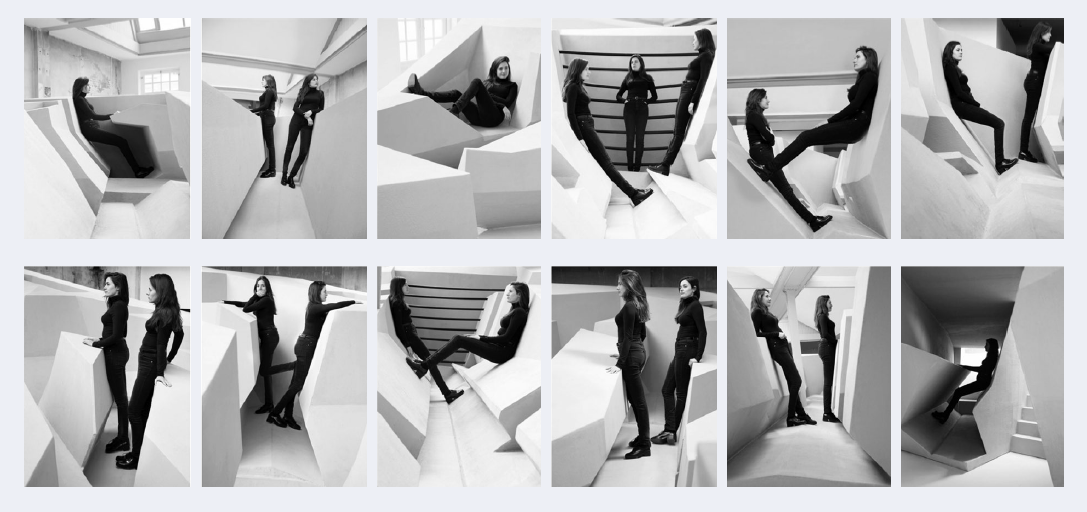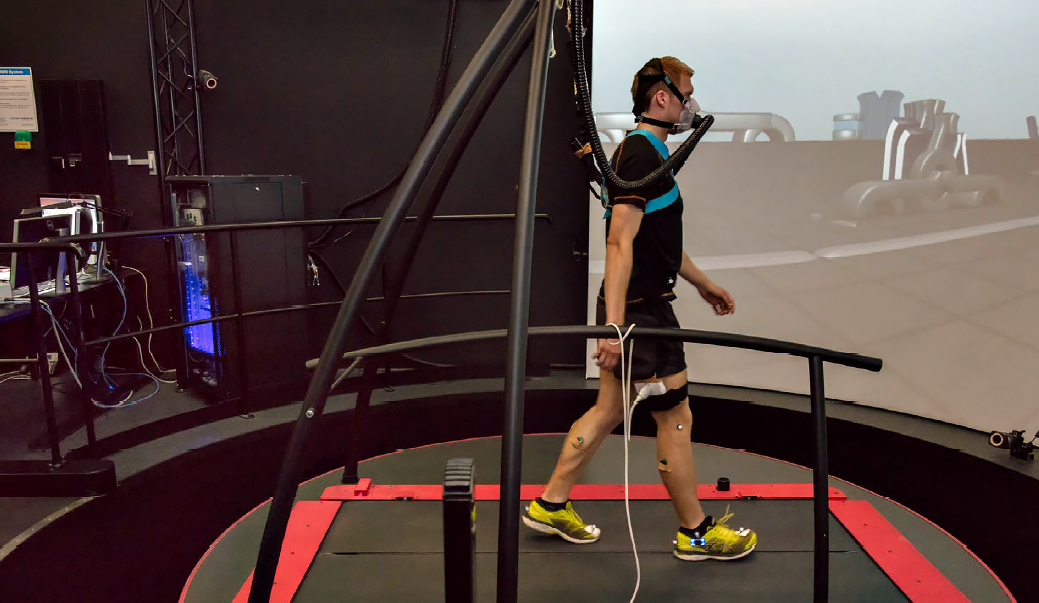Physical Activity Matters!
Division 1: Obesity, Diabetes & Cardiovascular Health and
Division 3: Respiratory & Age-related Health
Department of Nutrition and Movement Sciences
Background
Why does physical activity matter?
Already the ancient Greeks considered physical activity as a lifestyle factor. Physical activity is key to staying healthy as an individual; the key saying being ‘use it or lose it’. Physical activity affects many aspects of being, cardio-metabolic health, musculoskeletal performance, cognitive function, resilience, and well-being.
For a long time, physical activity was equated with exercise and more precisely the energy expenditure due to exercise. Over the last decennia, the notion has grown that the importance of physical activity for human well-being extends beyond compensating energy intake. Daily behavioral patterns and the exposure to challenging physical activities also play a major role in the health effects.
Benefits of physical activity apply over the whole lifespan, in health and disease. Children engaging in physical activity have better weight control and are less likely to develop metabolic disease over time. In the elderly, mobility is reduced and falls occur more frequently. ‘Use it or lose it’ also applies here and relatively short interventions can improve balance control. In patients undergoing surgery, it been established that physical conditioning before and after surgery decreases the risk of complications, shortens hospitalization, and leads to a faster recovery of physical functioning.
Major breakthroughs
Do not sit, stay active
Over the last decennium, research in the department of Nutrition and Movement Sciences has shown that the pattern in which daily energy is expended is a key determinant. Cardio-metabolic health is significantly more improved by spreading physical activity over the day in numerous low-intensity bouts, and thus frequently breaking sitting time, than by spending the same amount of energy in a short and single bout of intense physical activity. This insight has considerable impact on interventions targeting lifestyle-related diseases and has been adopted in the recent health guidelines. The challenge is not just to convince the public to exercise, but also to show how low-intense activities can be easily incorporated in daily life to interrupt extended periods of sitting.
Being active over the lifespan, in health and disease
To promote being physically active from young age onwards, our group collaborates with the department of Health Promotion, Pediatrics and the faculty of Psychology to design innovative school-based activity interventions aimed at promoting durable healthy behaviour in children. One of the key factors here is to increase intrinsic motivation to be physically active by focusing on what children want to do not what they need to do.
Who is involved?
Key personnel: Jos Adam, Brenda Berendsen, Bart Bongers, Hans Essers, Chris McCrum, Kenneth Meijer, Guy Plasqui, Hans Savelberg, Paul Willems.
Users and Collaborations
The impact of our research is reflected in our broad network of clinical and research departments within the Maastricht University Medical Centre. We cooperate with colleagues from the departments of Anesthesiology, Cognitive Neurosciences, Epidemiology, Health Promotion and Education, Internal Medicine, Neurology, Neuropsychology, Neurosurgery, Orthopaedics, Otorhinolaryngology and Head and Neck Surgery, Physical Therapy, Reumatology, Respiratory Medicine, Surgery and pediatrics.
Furthermore, we have numerous national and international collaborators; such as University Medical Centre Groningen, the University of Applied Sciences Nijmegen, the London South Bank University, the University of Limerick and the Norwegian School of Sports Sciences. Grants from industries, patient organizations and competitive research grants (ZonMW, TTW, Eurostars) have contributed highly to the success of our team.

Our work on fall prevention has shown that a task-specific approach and training specific balance mechanisms result in fast, significant improvements in reactive balance control in a fraction of the time of more typical general exercise interventions. Our work has also demonstrated that these benefits are long lasting - suggesting that an annual or biannual “inoculation” of highly specific balance training could be extremely effective, as well as feasible, for falls prevention. Daily exposure to balance challenging physical activities could prevent falls.
Life-long physical activity and the consequent fitness is a benefit when one prepares for surgery. Patients who have not been successful at keeping their fitness up to par are left with nothing but a high-intensity interval training program to preoperatively improve their aerobic capacity. Persuading these patients to participate is in this case the challenge. To maximize participation rate, adherence, and effectiveness in these high-risk patients, our work demonstrated that a preoperative exercise program must be integrated in the perioperative trajectory and performed in the patient’s pre-existent living context.
State-of-the-art infrastructure
Our research is built on state-of-the art facilities, including a Human Performance Lab in which we can study the biophysical and physiological mechanisms that are triggered by physical activities. Moreover, we are actively involved in the development, implementation and validation of wearable health technology and data science. These developments have led to several tailor- made platforms for activity monitoring (www.accelerometry.eu), that are vital tools for research and coaching of physical activity.
Scientific impact/Research quality
Selection of publications
- Duvivier BM, Schaper NC, Hesselink MK, van Kan L, Stienen N, Winkens B, Koster A, Savelberg HH. Breaking sitting with light activities vs structured exercise: a randomised crossover study demonstrating benefits for glycaemic control and insulin sensitivity in type 2 diabetes. Diabetologia, 2017;60(3):490-498.
- Ten Hoor GA, Rutten GM, Van Breukelen GJP, Kok G, Ruiter RAC, Meijer K, Kremers SPJ, Feron FJM, Crutzen R, Schols AMJW, Plasqui G. Strength exercises during physical education classes in secondary schools improve body composition: a cluster randomized controlled trial.
- McCrum C, Karamanidis K, Grevendonk L, Zijlstra W, Meijer K. (2020) Older adults demonstrate interlimb transfer of reactive gait adaptations to repeated unpredictable gait perturbations. GeroScience. 42(1): 39-49. doi: 10.1007/s11357019-00130
- Berkel AE, Bongers BC, Kotte H, Weltevreden P, de Jongh FH, Eijsvogel MM, Wymenga AN, Bigirwamungu-Bargeman M, van der Palen J, van Det MJ, van Meeteren NL, Klaase JM. Effects of community-based exercise prehabilitation for patients scheduled for colorectal surgery with high risk for postoperative complications: results of a randomized clinical trial. Ann Surg. In press.
- Bijnens W, Aarts J, Stevens A, Ummels D, Meijer K. Optimization and Validation of an Adjustable Activity Classification Algorithm for Assessment of Physical Behavior in Elderly. Sensors (Basel). 2019 Dec 4;19(24):5344. doi: 10.3390/s19245344.

Societal impact
Our work on interrupting prolonged sedentary behaviour, is reflected in the last version of Furthermore, beyond our scientific work we contributed to:
- The Dutch Guidelines for Physical Activity (2017), that advice to limit sitting time.
- The development of the Hospital Fit App, a tool that promotes physical activity in hospital settings. It is currently used by several hospitals.
- Participation in national study groups and expert panels to promote advanced gait analysis (e.g. The GRAIL User group and the Gaitscript study group (standardization of clinical gait analysis)).
- Development and implementation of novel, perturbation-based, training regimes to reduce fall risk in elderly subjects.
- Personalized prehabilitation programs that have been adopted by several clinical disciplines (e.g., abdominal (cancer) surgery, cardiac surgery) to accelerate and improve postoperative recovery of physical functioning and reduce (the consequences of) complications and length of stay. This will also lead to a reduction in healthcare costs.
- An approach to measure professional athletes’ energy expenditure in the field during competition events in order to optimize their nutritional strategies
- Development of international operating and reporting standards for the assessement of human energy and substrate metabolism using respiration chambers.
- Development of an international standard methodology for human doubly labelled water studies.
Future Perspectives
Physical activity behaviour is characterized by duration, intensity, timing on the day, and frequency of various sort of activities. A future challenge will be to find combinations of these aspects that have beneficial outcomes, not only for cardiometabolic health, but also for other health and performance outcomes (learning, musculoskeletal power, balance control, immunity, preparation for surgery, et cetera). This work will capitalize on technological developments in wearable monitoring and data science to which we contribute via collaboration with technology partners.